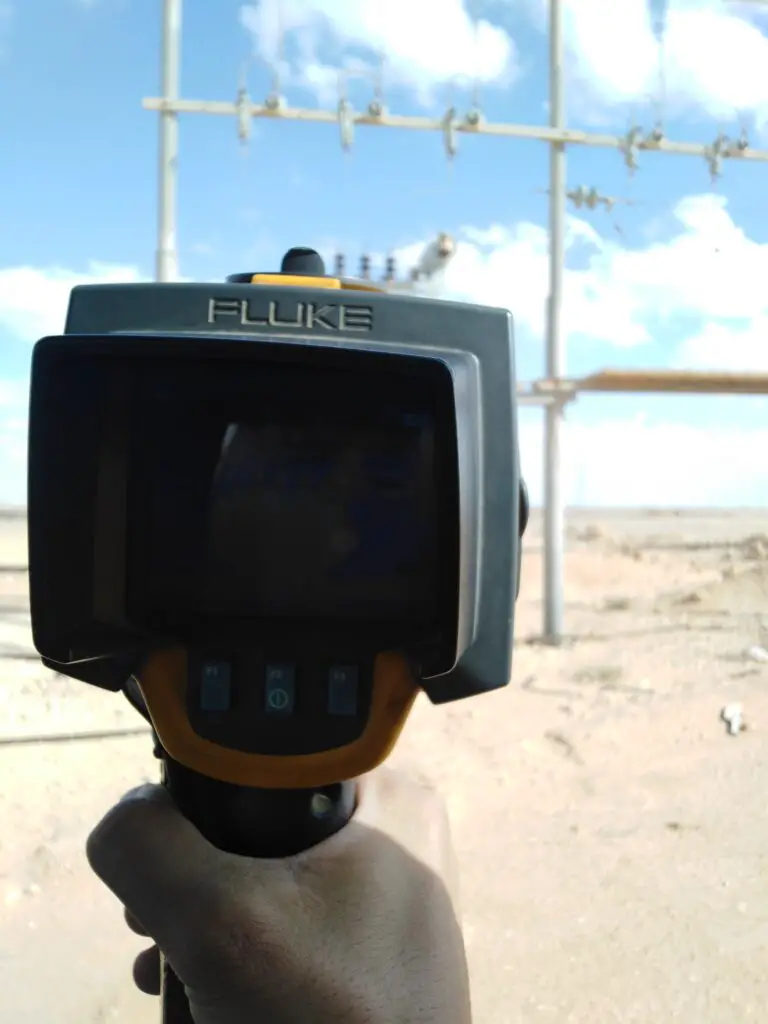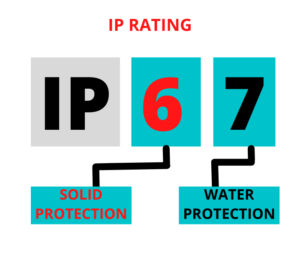Electrical maintenance is the process of inspecting, testing, and repairing electrical systems to ensure their safe and reliable operation.
Regular electrical maintenance is essential to prevent electrical failures, equipment damage, and workplace hazards.
In this article, we will explore the key aspects of electrical maintenance, including the importance of electrical maintenance, types of electrical maintenance, common electrical maintenance tasks, and tips for effective electrical maintenance.
Table of Contents
I. Importance of Electrical Maintenance
A. Ensuring safety:
Regular electrical maintenance is critical to ensuring workplace safety, preventing electrical hazards, and complying with safety regulations.
B. Preventing equipment damage:
Electrical maintenance helps prevent damage to electrical equipment, which can lead to downtime, lost productivity, and expensive repairs or replacements.
C. Extending equipment life:
Regular maintenance can extend the lifespan of electrical equipment, reducing the need for premature replacement.
D. Reducing energy costs:
Maintaining electrical systems can reduce energy waste and improve energy efficiency, leading to lower energy costs.
II. Types of Electrical Maintenance
A. Preventive maintenance:
Preventive maintenance is a crucial aspect of electrical maintenance, as it helps to prevent problems before they occur, thereby reducing the risk of equipment failure, downtime, and costly repairs or replacements.
This type of maintenance involves regular inspections, testing, and cleaning of electrical systems to identify and address potential issues before they can cause problems.
Regular inspections are an essential part of preventive maintenance. During inspections, electrical systems and equipment are checked for signs of wear and tear, damage, and other issues that may affect their performance.
The frequency of inspections depends on the equipment’s age, usage, and criticality. For example, equipment that is critical to the business’s operation may require more frequent inspections than equipment that is less critical.
Testing is another important part of preventive maintenance. Electrical systems and equipment must be tested to ensure that they are operating correctly and within safe limits. Some examples of testing include:
- Electrical testing: This involves testing the electrical components of equipment, such as motors, transformers, and circuit breakers, to ensure that they are operating correctly.
- Thermal testing: This involves using thermal imaging cameras to detect overheating in electrical systems, which can indicate potential problems.
- Vibration testing: This involves testing equipment for excessive vibration, which can indicate worn or damaged bearings or other components.
- Insulation testing: This involves testing the insulation resistance of electrical systems to ensure that they are adequately insulated and protected against electrical hazards. For more information about, How to test motor insulation resistance read my in-depth article here.
Cleaning is another critical aspect of preventive maintenance. Electrical systems and equipment must be kept clean to prevent dust buildup, which can affect their performance and cause damage.
Cleaning may involve wiping down equipment, vacuuming dust from enclosures, and using specialized cleaning solutions to remove dirt and debris from components. Read my article about How dust and debris affect ODP motors for more information.
B. Predictive maintenance:
Predictive maintenance is a type of maintenance that uses data analysis and monitoring tools to identify potential equipment problems and prevent failures.
This maintenance strategy is based on the principle that equipment failures are often preceded by warning signs or changes in performance, which can be detected and analyzed using advanced monitoring tools.
Predictive maintenance involves collecting and analyzing data from equipment sensors and other sources to identify patterns or trends that indicate potential problems. This data can include information on equipment performance, energy usage, temperature, vibration, and other factors that may affect its operation.
Advanced analytics tools are used to analyze this data and identify potential issues before they become critical.
One example of a predictive maintenance technique is vibration analysis. Vibration sensors can be used to monitor equipment for excessive vibration, which can indicate potential problems such as worn or damaged bearings. By analyzing the vibration data, it is possible to detect and address these issues before they lead to equipment failure.
Another example is thermal imaging, which can be used to detect hot spots in electrical systems and equipment. Hot spots can indicate potential problems such as loose connections or overloaded circuits, which can be addressed before they cause equipment failure or electrical hazards.
Predictive maintenance can help businesses save money and reduce downtime by identifying potential problems before they occur. By addressing issues early, businesses can avoid costly repairs or replacements and reduce the risk of equipment failure or downtime.
Predictive maintenance can also improve equipment efficiency and extend its useful life, resulting in further cost savings.
C. Corrective maintenance:
Corrective maintenance is a type of maintenance that involves repairing or replacing equipment that has failed or is malfunctioning. This type of maintenance is often reactive and is carried out after equipment failure has occurred.
Corrective maintenance is necessary when preventive or predictive maintenance has not been able to prevent equipment failure.
Corrective maintenance can be categorized into two types: emergency maintenance and planned maintenance.
Emergency maintenance is carried out when equipment failure is unexpected and requires immediate attention.
This type of maintenance is often costly and can result in significant downtime. Examples of emergency maintenance include repairing a broken motor, fixing a blown fuse, or replacing a failed transformer.
Planned maintenance, on the other hand, involves scheduling repairs or replacements for equipment that is showing signs of wear or nearing the end of its useful life.
This type of maintenance is less costly than emergency maintenance and can be carried out during scheduled downtime or during periods of low demand. Examples of planned maintenance include replacing worn belts, cleaning and lubricating equipment, or replacing aging equipment.
Corrective maintenance is a necessary part of electrical maintenance, but it can be costly and disruptive.
By implementing preventive and predictive maintenance strategies, businesses can reduce the need for corrective maintenance and minimize downtime and repair costs.
However, in cases where equipment failure is unexpected or unavoidable, corrective maintenance is essential to restore equipment functionality and maintain safe and reliable operations.
III. Common Electrical Maintenance Tasks

here are some common electrical maintenance tasks along with examples and benefits:
- Testing electrical systems: Regular testing of electrical systems is necessary to identify potential issues before they become major problems. This can include tests such as insulation resistance testing, ground resistance testing, and voltage testing. For example, insulation resistance testing can identify insulation breakdown, which can lead to short circuits and equipment failure. By detecting these issues early, businesses can take corrective action before equipment failure occurs.
- Cleaning electrical components: Regular cleaning of electrical components such as switchgear, circuit breakers, and transformers is essential to prevent the buildup of dirt and debris, which can lead to equipment failure. For example, dirty contacts in a circuit breaker can cause arcing and reduce the lifespan of the equipment. By cleaning electrical components regularly, businesses can prevent these issues and extend the useful life of their equipment.
- Lubricating moving parts: Moving parts such as bearings, gears, and motors require regular lubrication to prevent wear and tear and reduce friction. For example, a motor that is not properly lubricated can overheat and fail prematurely. By lubricating moving parts regularly, businesses can ensure the smooth and efficient operation of their equipment.
- Tightening electrical connections: Loose electrical connections can cause equipment failure, arcing, and even electrical fires. Regular tightening of electrical connections can prevent these issues and ensure the safe and reliable operation of electrical systems. For example, loose connections in a control panel can cause malfunctions and equipment damage. By tightening electrical connections regularly, businesses can prevent these issues and maintain safe and reliable operations.
- Inspecting electrical equipment: Regular inspections of electrical equipment such as transformers, motors, and switchgear can identify potential issues such as worn or damaged components. For example, an inspection of a transformer may reveal signs of overheating, which can indicate potential problems such as a faulty cooling system or insulation breakdown. By inspecting electrical equipment regularly, businesses can identify potential issues early and take corrective action before equipment failure occurs.
- Calibration involves verifying the accuracy and performance of electrical instruments and equipment. This can include devices such as multimeters, voltage testers, and current clamps. Calibration is important because inaccurate readings can lead to improper adjustments and settings, which can cause equipment failure or unsafe operating conditions. By calibrating electrical instruments and equipment regularly, businesses can ensure that they are providing accurate and reliable data for maintenance and troubleshooting purposes.
- Thermal imaging is a non-invasive technique that uses infrared technology to detect temperature variations in electrical components and systems. This can include components such as switchgear, circuit breakers, OHTL, and transformers. Thermal imaging is important because it can identify potential issues such as overheating, loose connections, and insulation breakdown. By identifying these issues early, businesses can take corrective action before equipment failure occurs, minimizing downtime and repair costs. I use thermal imaging to inspect OHTL connections.
Overall, these common electrical maintenance tasks are essential for maintaining safe and reliable operations and preventing equipment failure.
By implementing a comprehensive electrical maintenance program that includes these tasks, businesses can minimize downtime, reduce repair costs, and extend the useful life of their equipment.
IV. Tips for Effective Electrical Maintenance
A. Develop a maintenance plan:
A comprehensive maintenance plan should include regular inspections, testing, and repairs based on the equipment’s age, usage, and criticality.
B. Train staff:
Ensure that staff members are trained to recognize electrical hazards, perform basic electrical maintenance tasks, and report any potential issues.
C. Use proper tools and equipment:
Use the correct tools and equipment for electrical maintenance tasks to prevent damage to equipment or injury to staff.
D. Document all maintenance activities:
Keeping detailed records of maintenance activities can help identify recurring issues, track equipment performance, and ensure compliance with safety regulations.
E. Seek professional help when necessary:
Electrical maintenance tasks that require specialized expertise, such as high-voltage work, should be performed by qualified professionals.
V. Conclusion
Electrical maintenance is essential for ensuring the safe and reliable operation of electrical systems and equipment.
By developing a comprehensive maintenance plan, regularly inspecting and testing equipment, and performing necessary repairs and maintenance tasks, businesses can prevent equipment failure, workplace hazards, and unnecessary expenses.
Don’t Leave Empty-Handed!
Install my Free Android App on Google Play:
Electrical Cables Most Common Tables “Cables Tables”
And, my Electrical Calculations App “Fast Electrical Calculator”
Discover more great content by subscribing to My channel
Looking to stay ahead of the game in the world of electrical engineering? Subscribe to my YouTube channel and gain access to exclusive content you won’t find anywhere else!
The staff I recommend
(Amazon Affiliate Links to products I believe are high quality):
- Economy 120 Volt/60Hz AC Power Source – Step-Down Voltage & Frequency Converters 1800W
- UNI-T Digital Multimeter Tester UT139C
- 50-Amp Extension Cord for RV “100ft”
- Voltage Stabilizer 110/220v
- Hair Dryer “best selling“
- TOSHIBA EM131A5C-BS Countertop Microwave Ovens
Disclaimer: This contains affiliate links to Amazon products. I may earn a commission for purchases made through these links.


